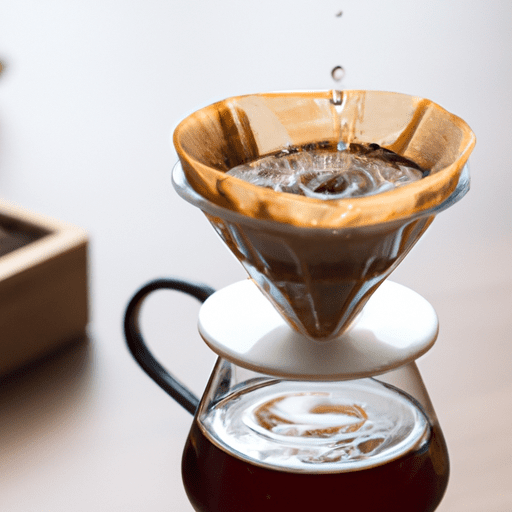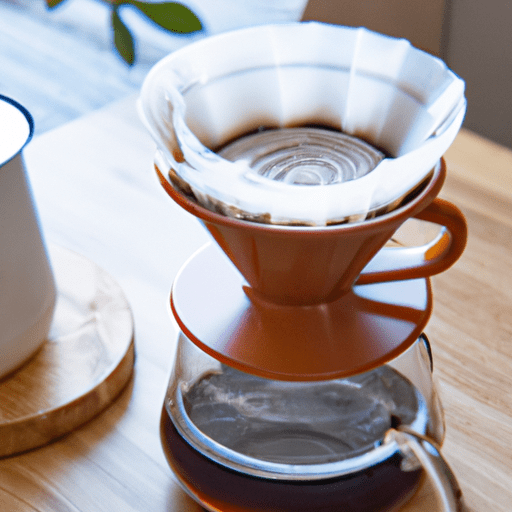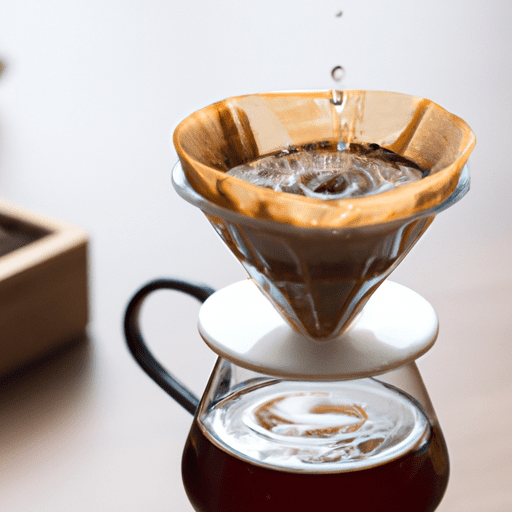In “Mastering the Art of Pour Over Coffee: Wetting the Filter Properly”, your brewing technique will be taken to new heights, with a specific focus on the essential step of pre-wetting the coffee filter. You’ll discover why skipping this important stage can compromise the quality of your morning cup, and just how easy it is to implement this small change for a considerably more flavorful brew. Grab your filters, your kettle, and your favorite roast; your journey to pour over perfection awaits!

Why Wetting the Filter is Important
When preparing your perfect cup of pour-over coffee, you might wonder why it’s necessary to wet the filter before brewing. In reality, this is a crucial step that you should never overlook. It significantly impacts the flavor of your coffee, the speed at which your coffee brews, and the freshness of your cup. Let’s explore why this simple action is so important.
Enhances Flavor Extraction
The first and arguably the most critical reason for wetting the filter is to enhance the extraction of coffee flavors. When you wet your filter, it better adheres to the walls of the brewer, ensuring an even and consistent extraction. This process will result in a better brewed coffee, with all the complex flavors coming out in a balanced way. If you have ever experienced a bland or overly bitter brew, inadequate extraction could be a possible culprit.
Creates Proper Flow Rate
Secondly, wetting the filter can help to create the proper flow rate for your brewing process. This process entails adjusting the speed at which the water drains through the coffee grounds. The key goal here is achieving a balanced extraction, and thus, by dampening the filter before using it, the water will flow through the coffee at the correct pace, not too fast nor too slow.
Prevents Paper Taste
Finally, wetting your filter can eliminate the unwanted paper taste present in some types of paper filters. If you’ve ever taken a sip from your carefully brewed coffee and detected a faint taste of paper, you’ve experienced this issue firsthand. Rinsing the filter with hot water before using it can get rid of that paper taste, making your cup of coffee pure and clean.
Preparing the Filter
Once you appreciate the relevance of wetting your filter, you must now prepare your filter adequately for this purpose. This process includes selecting the correct filter, rinsing it suitably, and getting it ready in your brewer.
Selecting the Right Filter
It’s worth noting that not all filters are the same; some are thicker, some are bleached, while others are more prone to tearing. Therefore, it’s essential to ensure you select a high-quality filter suitable for your brewer and coffee type.
Rinsing the Filter
Once you have your filter selected, it’s time to rinse it. This step is simple: just pour hot water over it, ensuring the entire surface gets wet. Be watchful not to tear the filter during this process, especially if you’re using a thinner model.
Placement in the Brewer
The very last step in preparing your filter for brewing is placing it properly into your brewer. Remember, the filter’s purpose is to hold the coffee grounds and give the water a path to follow. The correct placement ensures that this happens as intended.

Wetting the Filter
So how exactly do we go about wetting the filter? Here’s a quick and straightforward step-by-step guide to doing just that.
Gather Equipment and Ingredients
Before you start, make sure you have everything you need. This includes a pour-over brewer, a paper filter that fits your brewer, freshly ground coffee, a kettle for boiling water, hot water, and a timer. You will also need a mug or carafe to collect your brewed coffee.
Preheating the Brewer and Mug
This step, often overlooked, is important to ensure temperature consistency. By preheating your brewer and mug, you can keep the brewing temperature stable and thereby extract more flavors from your coffee.
Placing the Filter
Next, unfold your paper filter and insert it into your brewer, ensuring that it adheres nicely to the walls of the brewer for even extraction.
Pouring Hot Water Slowly
Pour hot water over the paper filter, starting with a small amount and allowing it to fully drain before repeating the process. This action gets rid of any potential paper taste and preps the filter for brewing.
Pro Tips for Wetting the Filter Properly
While wetting the filter might seem straightforward, a few unusual tips can help make this process even more efficient.
Use Filter Rinse Water
A professional tip is to use the same hot water you’ll be using to brew your coffee to rinse your filter. This technique guarantees that no foreign flavors interfere with your coffee.
Avoid Over-Rinsing
Be careful not to over-rinse the filter. An over-rinsed filter could tear or lead to over-extraction, which will sour the taste of your brew.
Control the Pouring Speed
The speed at which you pour the water over the coffee matters. Aim for a slow and steady pour to ensure even saturation of the grounds.
Experiment with Water Temperature
Incorporating different water temperatures can impact the flavors you extract from the coffee. Different types of coffee beans may yield better results with cooler or hotter water, so don’t be afraid to explore!
Practice Makes Perfect
Like with any skill, practice makes perfect! Over time, you’ll become more comfortable with the process and develop your method to ensure your brew is just right every time.
Conclusion
Properly wetting your coffee filter is an indispensable step to enhance flavor extraction, create the correct brew flow, and avoid any paper taste. With practice, and by following these outlined steps, you’re sure to master the art of pour-over coffee brewing and enjoy a perfectly brewed, flavorful cup of coffee every time you brew. Enjoy your coffee journey!
